
Radioactive waste is a type of hazardous waste that contains radioactive material. Radioactive waste is a result of many activities, including nuclear medicine, nuclear research, nuclear power generation, nuclear decommissioning, rare-earth mining, and nuclear weapons reprocessing. The storage and disposal of radioactive waste is regulated by government agencies in order to protect human health and the environment.
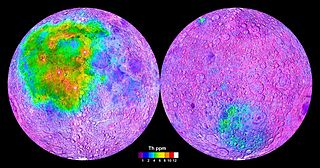
KREEP, an acronym built from the letters K, REE and P, is a geochemical component of some lunar impact breccia and basaltic rocks. Its most significant feature is somewhat enhanced concentration of a majority of so-called "incompatible" elements and the heat-producing elements, namely radioactive uranium, thorium, and potassium.
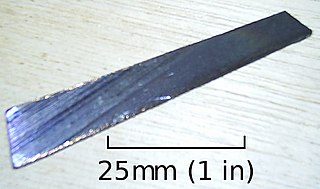
Uranium-238 is the most common isotope of uranium found in nature, with a relative abundance of 99%. Unlike uranium-235, it is non-fissile, which means it cannot sustain a chain reaction in a thermal-neutron reactor. However, it is fissionable by fast neutrons, and is fertile, meaning it can be transmuted to fissile plutonium-239. 238U cannot support a chain reaction because inelastic scattering reduces neutron energy below the range where fast fission of one or more next-generation nuclei is probable. Doppler broadening of 238U's neutron absorption resonances, increasing absorption as fuel temperature increases, is also an essential negative feedback mechanism for reactor control.

The Waste Isolation Pilot Plant, or WIPP, in New Mexico, US, is the world's third deep geological repository licensed to store transuranic radioactive waste for 10,000 years. The storage rooms at the WIPP are 2,150 feet underground in a salt formation of the Delaware Basin. The waste is from the research and production of United States nuclear weapons only. The plant started operation in 1999, and the project is estimated to cost $19 billion in total.
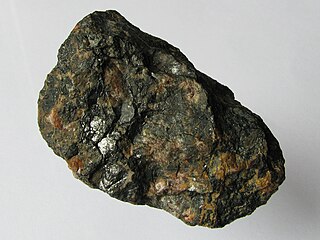
Coffinite is a uranium-bearing silicate mineral with formula: U(SiO4)1−x(OH)4x.
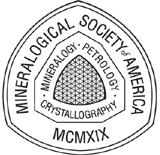
The Mineralogical Society of America (MSA) is a scientific membership organization. MSA was founded in 1919 for the advancement of mineralogy, crystallography, geochemistry, and petrology, and promotion of their uses in other sciences, industry, and the arts. It encourages fundamental research about natural materials; supports the teaching of mineralogical concepts and procedures to students of mineralogy and related arts and sciences; and attempts to raise the scientific literacy of society with respect to issues involving mineralogy. The Society encourages the general preservation of mineral collections, displays, mineral localities, type minerals and scientific data. MSA represents the United States with regard to the science of mineralogy in any international context. The Society was incorporated in 1937 and approved as a nonprofit organization in 1959.
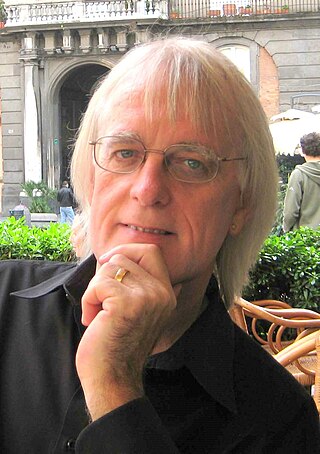
Frank Christopher Hawthorne is an English-born Canadian mineralogist, crystallographer and spectroscopist. He works at the University of Manitoba and is currently distinguished professor emeritus. By combining graph theory, bond-valence theory and the moments approach to the electronic energy density of solids he has developed bond topology as a rigorous approach to understanding the atomic arrangements, chemical compositions and paragenesis of complex oxide and oxysalt minerals.

Since the mid-20th century, plutonium in the environment has been primarily produced by human activity. The first plants to produce plutonium for use in cold war atomic bombs were the Hanford nuclear site, in Washington, and Mayak nuclear plant, in Chelyabinsk Oblast, Russia. Over a period of four decades, "both released more than 200 million curies of radioactive isotopes into the surrounding environment – twice the amount expelled in the Chernobyl disaster in each instance."
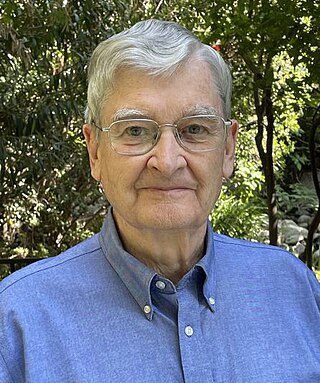
George R. Rossman is an American mineralogist and the Professor of Mineralogy at the California Institute of Technology.
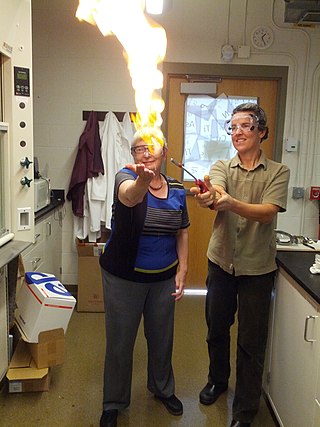
Alexandra Navrotsky is a physical chemist in the field of nanogeoscience. She is an elected member of the United States National Academy of Sciences (NAS) and the American Philosophical Society (APS). She was a board member of the Earth Sciences and Resources division of the NAS from 1995 until 2000. In 2005, she was awarded the Urey Medal, by the European Association of Geochemistry. In 2006, she was awarded the Harry H. Hess Medal, by the American Geophysical Union. She is currently the director of NEAT ORU, a primary program in nanogeoscience. She is distinguished professor at University of California, Davis.

Jillian Fiona Banfield is professor at the University of California, Berkeley with appointments in the Earth Science, Ecosystem Science and Materials Science and Engineering departments. She is the director of microbiology the Innovative Genomics Institute, is affiliated with Lawrence Berkeley National Laboratory and has a position at the University of Melbourne, Australia. Some of her most noted work includes publications on the structure and functioning of microbial communities and the nature, properties and reactivity of nanomaterials.
Paulscherrerite, UO2(OH)2, is a newly named mineral of the schoepite subgroup of hexavalent uranium hydrate/hydroxides. It is monoclinic, but no space group has been determined because no single-crystal study has been done. Paulscherrerite occurs as a canary yellow microcrystalline powdery product with a length of ~500 nm. It forms by the weathering and ultimate pseudomorphism of uranium-lead bearing minerals such as metaschoepite. The type locality for paulscherrerite is the Number 2 Workings, Radium Ridge near Mount Painter, North Flinders Ranges, South Australia, an area where radiogenic heat has driven hydrothermal activity for millions of years. It is named for Swiss physicist Paul Scherrer, co-inventor of the Debye-Scherrer X-ray powder diffraction camera. Study of paulscherrerite and related minerals is important for understanding the mobility of uranium around mining sites, as well as designing successful strategies for the storage of nuclear weapons and the containment of nuclear waste.
Georges Calas is professor of mineralogy (Emeritus) at Sorbonne Université and an honorary Senior Member of University Institute of France.

Bioremediation of radioactive waste or bioremediation of radionuclides is an application of bioremediation based on the use of biological agents bacteria, plants and fungi to catalyze chemical reactions that allow the decontamination of sites affected by radionuclides. These radioactive particles are by-products generated as a result of activities related to nuclear energy and constitute a pollution and a radiotoxicity problem due to its unstable nature of ionizing radiation emissions.
Michael F. Hochella, Jr. is an American geoscientist and currently a university distinguished professor (Emeritus) at Virginia Tech and a laboratory fellow at Pacific Northwest National Laboratory. He is a Fellow of the American Association for the Advancement of Science, Royal Society of Chemistry, Geochemical Society, European Association of Geochemistry, Mineralogical Society of America, International Association of GeoChemistry, Geological Society of America and American Geophysical Union. His interests are nanogeoscience, minerals, biogeochemistry and geochemistry. Currently among greater than 22,500 citations, his highest cited first-author paper is Nanominerals, mineral nanoparticles, and earth systems at over 940 citations, and published in the journal Science in 2008, and his highest cited co-authored paper is Nanotechnology in the real world: Redeveloping the nanomaterial consumer products inventory at over 1,995 citations, and published in the Beilstein Journal of Nanotechnology in 2015, according to Google Scholar. He is a former President of both the Geochemical Society and the Mineralogical Society of America. He is also the Founder and former Director of NanoEarth, a node of the National Nanotechnology Coordinated Infrastructure (NNCI), an NSF-funded network of 16 centers spread throughout the United States serving as user facilities for cutting edge nanotechnology research. NanoEarth is part of Virginia Tech's Institute for Critical Technology and Applied Science (ICTAS), and headquartered in Blacksburg, Virginia. Hochella has won many honors, medals, and awards for both research and teaching, including the Dana Medal of the Mineralogical Society of America, the Clair C. Patterson Medal of the Geochemical Society, the Geochemistry Division Medal of the American Chemical Society, and the Virginia Outstanding Faculty Award, the highest honor for faculty in the Commonwealth of Virginia.
Edward Bruce Watson is an American geochemist at Rensselaer Polytechnic Institute in Troy, New York.
Dr. Paul F. Kerr, was a Professor of Mineralogy at Columbia University. During the second World War, he was tasked with locating and procuring supplies of uranium for the Manhattan Project. Kerr had an academic interest in the geology of tungsten, uranium and clay minerals. He pioneered the use of X-rays in the process of mineral identification and is considered to be one of the fathers of applied mineralogy. At Columbia University he was instrumental in the founding of the Lamont–Doherty Earth Observatory.
Daniele Cherniak is an American geochemist known for her work on using particle beams for geochemical analysis on small scales. She was elected a fellow of the American Geophysical Union in 2021.
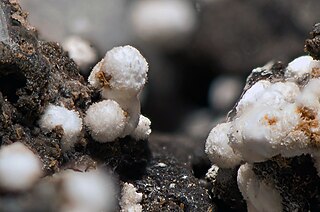
Tacharanite is a calcium aluminium silicate hydrate (C-A-S-H) mineral of general chemical formula Ca12Al2Si18O33(OH)36 with some resemblance to the calcium silicate hydrate (C-S-H) mineral tobermorite. It is often found in mineral assemblage with zeolites and other hydrated calcium silicates.
Simon Redfern is a mineralogist, geoscientist and academic. He is the Dean of the College of Science, the President's Chair in Earth Sciences, and a professor at Nanyang Technological University (NTU) Singapore as well as an emeritus Professorial Fellow at Jesus College, University of Cambridge.












